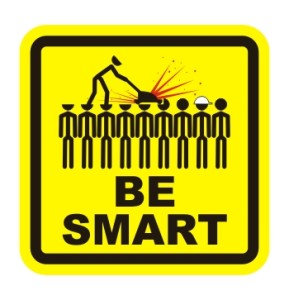

Prevention is Better than Cure
There is a unique world of wireless computer towers. There is the construction of the towers and there is the infrastructure that supports it. The common thought would be that because these towers belong to multibillion dollar corporations that there would be sufficient equipment and safety measures provided. But yet most towers have no mechanical lifts. In order to climb to the desired height means that tower climbers have to scale ladder rungs hand over hand. That is an especially cumbersome, awkward and dangerous task especially when while wearing bulky safety gear along with carrying an equipment bag.
It is critical for tower climbers to take every caution. The thought process for a tower climber to have is to know everything there is possible to know and to take every necessary step to protect themselves.
The following is not an inclusive list of precautions, but certainly it can be said that it is wise to pay attention to the following:
1 – Tower Climbing Training, Testing and Certification (OSHA or NATE)
Most specialized occupations require training. Tower Climbing communications towers is no exception since it is considered a highly specialized skill.
Industry recognized certification courses are recommended for new climbers. The training starts out by preparing those who require basic climbing skills. All those climbing the towers must be trained for working in radio frequency (RF) radiation environments and must know how to use a personal RF monitor.


2 – Maintain more than Adequate Safety and Protection Gear
The investment in the necessary equipment and gear is an absolutely required. Don’t ever think of doing your job without be completed dressed. Climbers must be fully suited with safety glasses, gloves, pants, boots, a helmet, outfitted with a safety harness, carabiners, tool belts, lanyards, rope grabs, as well as, jackets, and lifeline.
3 – RF Personal Alarm must be Turned On at All Times
While the risk of falling is great, the bigger problem is the risk of exposure to RF radiation. A tower climber cannot see RF signals. Keeping a RF personal monitor turned on at all times is crucial. Working on a tower means installers will always be close to an antenna and potentially exposed to RF radiation. Always leave it on and wear it on the outside of the RF suit. The only way to know whether RF signal levels are above the FCC’s Maximum Permissible Exposure (MPE) limit is using the RF personal monitor.
4 – Discard gear beyond expiration date
Climbing safety gear comes with expiration dates. With extensive use straps, harnesses and clips become stressed and worn where they may not perform as intended at a critical time.
5 – Work in areas with Proper Warning Signage
Make sure the placement of RF radiation warning signs are in appropriate locations along the ladder. These signs should be large and bright: “ON THIS TOWER: RADIO FREQUENCY FIELDS NEAR SOME ANTENNAS MAY EXCEED FCC RULES FOR HUMAN EXPOSURE. PERSONNEL CLIMBING THIS TOWER SHOULD BE TRAINED FOR WORKING IN RF ENVIRONMENTS AND SHOULD USE A PERSONAL RF MONITOR.”
6 – Accountability Plan for Carrier
Make sure that your safety is the carriers’ priority. Have a set of minimum standards that both the carrier, the environment (weather) and working conditions, must meet to start your work. Have the carrier sign off on a checklist like this:
- Proper signage
- Appropriate work permits
- Proper Lockout-Tagout (LOTO) procedure
- Schedule of day that installers will be on the tower
- Arrangements to ensure reduced RF transmission levels while the installers are on the tower
7 – Always use a Proper Climb Plan
Working on a tower involves coordinating and planning with numerous parties even before stepping up on the first rung. Make sure that everyone is informed and that the work can be conducted on the tower with maximum safety precaution.
